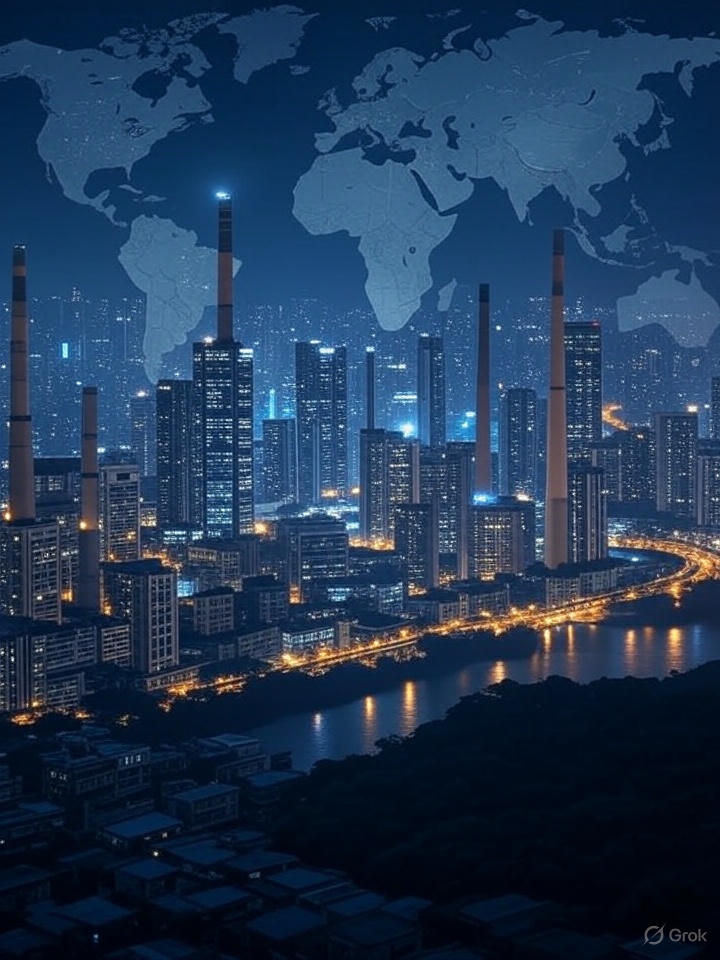The Dark Side of the World’s Lowest Unemployment Rates
- thebrink2028
- Aug 18
- 4 min read

It’s a sweltering dusk in Doha, and the city glows with borrowed ambition—a skyline built not by native hands, but by millions who arrived chasing a promise. Meanwhile, in rural Cambodia, a mother tills her patch of earth while her children play next to bikes made from old metal scraps. Here too, official statistics claim nearly every pair of working hands has something to do. Welcome to the curious phenomenon of low unemployment.
Global unemployment: Qatar, Cambodia, Niger, Thailand, Burundi—each boasting rates so low (between 0.2–1.0%) they defy the lived realities of most nations. Here’s why smart economists, traders and anyone with a nose for real risk should not just watch, but worry.
The Mirage: Why Are These Countries “Fully Employed”?
Qatar (0.2% unemployment): The world’s richest LNG exporter, Qatar's jobs market thrives on foreign labor—over 94% of its workforce are migrants, doing the grunt work while citizens are guaranteed high-status jobs in government or cushy state-linked enterprises. “If you want a job, you get a job,” a local expert says, but only if you’re Qatari. Migrant labor churn is masked by short-term contracts and forced departures: lose your job, lose your residency.
Cambodia (0.3%): Nearly every able-bodied Cambodian counts as “employed”—but most are underemployed, hustling in informal agriculture or small roadside businesses. Official stats ignore hidden joblessness, normalized as family members subsisting on minimal farm output. It’s statistical sleight-of-hand: “If you sell one mango, you’re employed,” says a Phnom Penh analyst.
Niger (0.4%): In an economy defined by subsistence farming, to be “employed” simply means working your family’s land. Actual wage jobs are rare, youth disillusionment is high, and social unrest simmers beneath the surface as the country’s population booms.
TheBrink finds The Fault Lines
Statistical Illusions: “Low unemployment” often means only that most adults do barely something to survive, not that they earn enough or are protected by social safety nets.
Migrant Labor Dynamics: In Qatar and other Gulf countries, migrants can’t remain idle—if they lose jobs, they must leave. This creates artificially low unemployment stats but immense social fragility.
Informal Economies: In Cambodia, Niger, Burundi, and Thailand, informal work rules the day—millions aren’t truly employed in the productive sense and have no labor protections.
Unreported Realities: Child labor, underemployment, and disguised joblessness are rampant—hidden behind statistical methodologies that paint a misleading upward trajectory.
True Comparisons
Compare these rates to “developed economies” where robust mechanisms catch and report every job loss, and unemployment insurance tracks distress. In contrast:
Population Growth: Niger and Cambodia have surging, young populations, meaning “employment” is a moving target, missing the real youth crisis.
Literacy and Skills Gaps: Low education levels mean large pools of the workforce lack competitive skills; jobs are simple, temporary, or seasonal.
Economic Base: Oil, gas, and agriculture can create abundant work in boom years, but these sectors are notoriously volatile.
Taxation and Government Schemes: Most of these nations offer little or no social safety nets; low taxes for citizens (or none for migrants) disguise the precarity.
Migration Policies: Nations like Qatar “export” unemployment—labourers are sent home or kept in cycles of short-term contract work.
Narrative Manipulation
What’s worse—governments, media, and experts parrot the good news, masking on-the-ground suffering. Leadership trumpets “upward trajectories” and fails to address foundational issues: youth unemployment, loss of dignity, and the pressure cooker of hidden social unrest.
The Creep of Crisis: Which Countries/Cities Could Be Next?
Rapidly Urbanizing African Cities: Lagos, Kinshasa, and Dakar face youth bulges and little formal sector growth—a recipe for unrest.
Middle Eastern Oil Economies: Kuwait, UAE, Saudi Arabia—all dependent on migrant labor, all at risk if energy prices crash or nationalization accelerates.
South Asian Hubs: Bangladesh and Pakistan share Cambodia’s informal employment structure—hidden risks on the rise.
TheBrinks Predictive Analysis
If current policies persist, we’ll see more “employment mirages”: rates remain low, but underlying social, financial, and psychological stress keep rising. Expect sudden labor market shocks—mass layoffs of migrants, urban youth revolt, or political upheaval spurred by jobless growth. Should prepare for increased volatility, inflated risk premiums, and social instability in supposedly “safe” economies.
Smart money should flee the narrative of “miraculous employment” and look for deeper structural cracks—because when the music stops, liquidity and labor both evaporate.
Predict with evidence-rich reasoning: which country will be the next to face a shock “hidden unemployment crisis”? The first 10 insightful response, shared with TheBrink, wins a $50 reward each.
Special Thank-You: Rémi Mouhoun, Burkina Faso
This research is lovingly sponsored by Rémi Mouhoun, a solar engineer from Ouagadougou, Burkina Faso, who grew up watching neighbors struggle with “jobs” that barely put food on the table. His drive: to unveil raw truths and spark real conversations for change. Let Rémi’s journey inspire other silent witnesses to sponsor the next story that shakes the system.
Is this the dawn of full employment—or are we sleepwalking into an invisible crisis? The real answers lie beneath the stats—if only you dare to look.
-Chetan Desai
Thank you for your interest in supporting TheBrink! Your appreciation means the world to us, and any contribution, whether funding future research or a token of thanks, helps fuel stories that uncover hidden truths and inspire change. If this article has sparked insights for you or your organization, you can show your support by clicking on Sponsor or reaching out directly thebrink2028@gmail.com to discuss funding opportunities. Every contribution powers our mission to deliver deep, impactful reporting. Let’s keep the conversation going.


